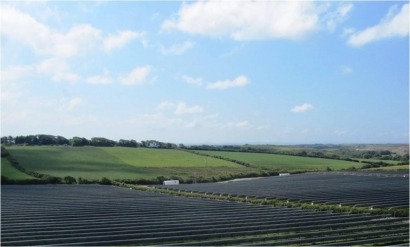
Solar Energy Perspectives, a new book released today by the International Energy Agency, provides relevant information, accurate data and sound analyses on solar energy technologies, market trends, and integration issues. It also considers how policy makers can best favour the deployment of solar energy while furthering cost reductions.
The publication builds upon Energy Technology Perspectives – a biennial IEA publication which outlines possible pathways to a more sustainable and secure energy system – in considering end-use sectors and the ever-growing role of electricity. It also follows on from many IEA Technology Roadmaps in elaborating an integrated approach to various solar energy technologies. It shows how best to use, combine and successfully promote the major categories of solar energy: solar heating and cooling, photovoltaic and solar thermal electricity, as well as solar fuels, and how they could combine to respond to our energy needs.
“While solar energy resources are abundant, their use currently represents only a tiny fraction of the world’s current energy mix. But this is changing rapidly and is being driven by action to improve energy diversification and security, mitigate climate change and provide energy access,” emphasises Cédric Philibert, the report’s author and a senior policy analyst at the IEA.
Yet many questions remain on the costs and benefits as well as who will bear or reap them. The rapid evolution of these technologies makes policy answers to those questions unusually difficult. Concerns about costs have also sometimes led to abrupt policy revisions. Policies may lapse or lose momentum just a few years before they would have succeeded.
Solar Energy Perspectives looks at which solar technologies are close to competitiveness, in which circumstances and for which uses. It also reviews the different types of policy support they require and for how long and investigates ways to make them more effective and cost-effective.
Up to now, only a limited number of countries have been supporting most of the effort to drive solar energy technologies to competitiveness. Comprehensive and fine-tuned policies supporting a large portfolio of solar energy technologies could be extended to most sunny regions of the world, where most of the growth of population and economy is taking place, and where seven out of nine billion people will live in the second half of this century. Under specific circumstances, solar energy could well become a competitive energy source in many applications within the next twenty years.
This publication also depicts a world in which solar energy reaches its very fullest potential by the second part of this century. A number of assumptions are made to see what might be possible in terms of solar deployment, while keeping affordability in sight.
Under these assumptions, solar energy has immense potential and could emerge as a major source of energy, in particular if energy-related carbon dioxide emissions must be reduced to quite low levels and if other low-carbon technology options cannot deliver on large scale. While this outcome is hypothetical, it does suggest that current efforts are warranted to enrich the portfolio of clean and sustainable energy options for the future.
“Integrating all solar technologies in a system-oriented policy approach will unlock the potential of solar energy within the broader set of low-carbon technologies needed for a future sustainable and more secure global energy mix”, concludes Paolo Frankl, Head of the IEA’s Renewable Energy Division.
For additional information:

